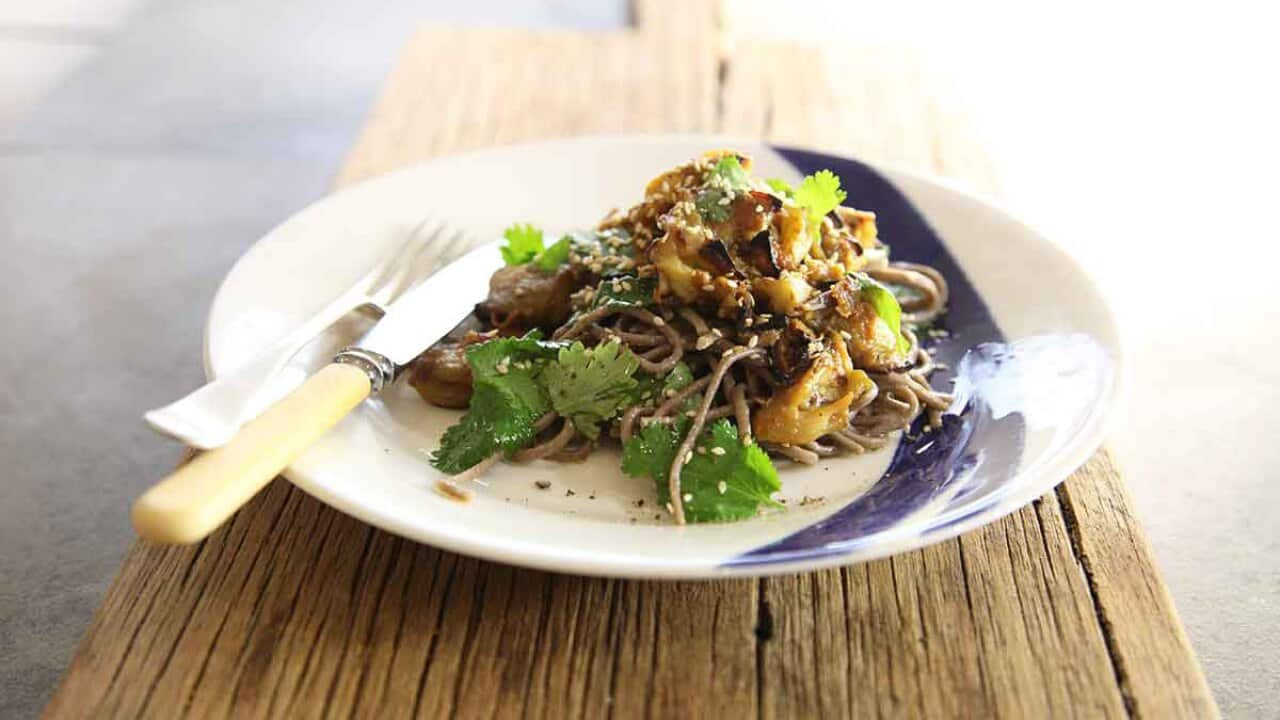Miso paste can absolutely be used for a diverse range of things—its umami-rich, salted caramel-like flavour profile means it's a natural enhancement for everything from ice cream to salad dressings. But, by far the most common use for it in its homeland, is for soup.
Miso soup, or as it's known locally, "miso-jiru", is one of the foundations of a basic meal formula in Japan, ichiju-sansai, which literally means "one soup and three side dishes". That soup is miso, and will be served to you whether you're at a 450-yen chain donburi shop or a 45,000-yen kaiseki meal.
The health benefits of miso soup make it a great side dish or snack—it's rich in essential minerals, and is a good source of B vitamins, vitamins E and K, and folic acid. And because it's a fermented food, it's high in gut-nourishing probiotics.
On Episode 5 of Justine's Flavours of Fuji, host Justine Schofield learns how to make "miso-maru", miso balls, with home cook and bento-box extraordinaire, Momo.
To make your own miso soup, using the little packets of instant miso soup are convenient and easily available. But, with just a little more effort you can customise your own, making the soup extra satisfying—and void of any unwanted additives.
Momo takes small handfuls of miso paste, and into each, adds some dashi granules and ingredients like dried tofu, pieces of carrot and spinach, dried whitebait and sesame seeds. These are rolled up and wrapped in wax paper or cling film, and popped into a lunchbox.
“Normal miso, a bit of dashi powder, any dried food, then roll them up,” says Momo.
Additions to the ball are hugely variable, and can be dried, frozen or fresh ingredients: wakame, finely chopped green onion, umeboshi for a sour-salty combination, furikake, mushrooms, shredded nori, finely cut aburaage (fried tofu). These balls have been quite a trend recently in Japan, with more elaborate ingredients ranging from yuzu zest to sakura ebi (tiny dried prawns) to gold flakes.
As far as customisation goes, aside from ingredient additions, you can experiment with different types of miso paste. Miso comes in an autumnal spectrum of colours: from the pale yellow to reddish-brown and near jet-black. The difference is the result of both type and proportions of ingredients, and length of aging.
The most common form of miso is made from soybeans, koji rice mold and water. Aside from soybeans, the main ingredient can be just about any grain - rice, barley, buckwheat, chickpeas, or a mix of these. The koji (starter mold) can also be different grains. The fermenting time is at least 6 months, but can last several years.
Kyoto's white "saikyo" miso has a delicate, sweetish flavour from the higher amount of rice koji used. Red miso is often a combination of soybeans and barley, and has a longer fermentation time, leading to its rich, salty, umami properties. Black miso is aged for around three years to give it its intense depth of colour and flavour.
When preparing your miso soup from a ball, heat either hot water, dashi stock or another kind of stock (if you haven't included stock granules in your miso balls), then remove it from the heat and whisk in the miso ball. Whatever you do, don't boil the miso—too much heat zaps it of its delicate and complex nutritional benefits, as well as flavour.
Then, when it's soup time, just add water, and you have an instant, healthy, and satiating snack.
“Always have the water at 80 degrees. If it’s boiling, then you lose a lot of the taste and smell," says Momo.
These cute and novel miso balls are so simple, why not give them a go in your next packed lunch?








